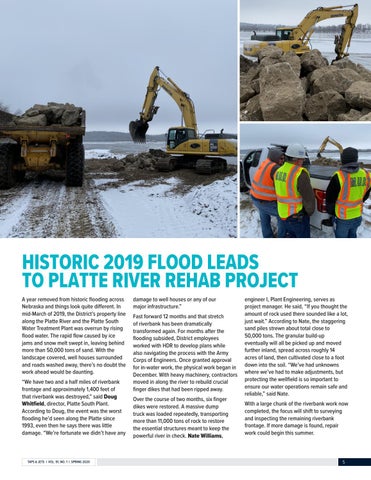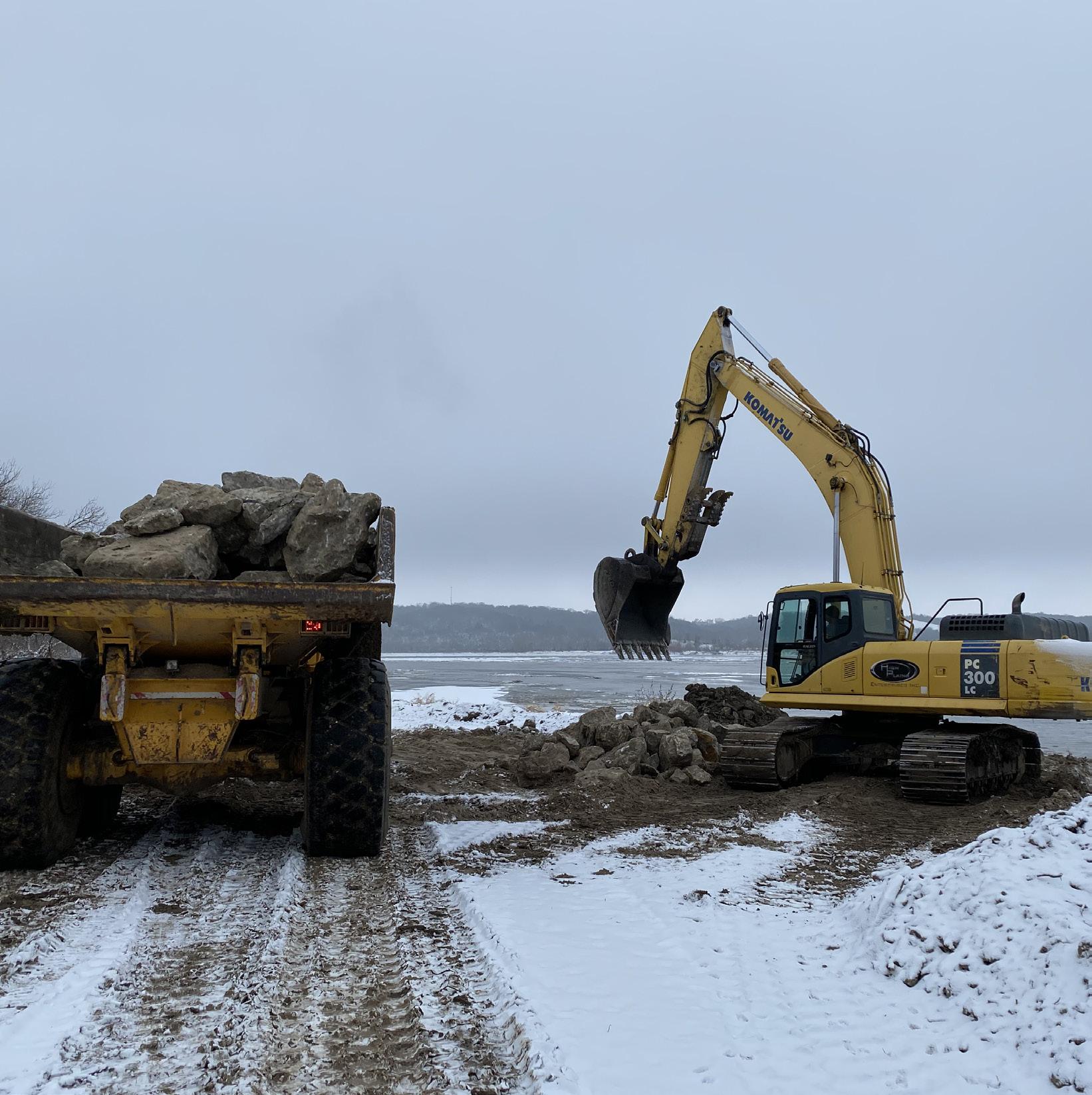HISTORIC 2019 FLOOD LEADS TO PLATTE RIVER REHAB PROJECT A year removed from historic flooding across Nebraska and things look quite different. In mid-March of 2019, the District’s property line along the Platte River and the Platte South Water Treatment Plant was overrun by rising flood water. The rapid flow caused by ice jams and snow melt swept in, leaving behind more than 50,000 tons of sand. With the landscape covered, well houses surrounded and roads washed away, there’s no doubt the work ahead would be daunting. “We have two and a half miles of riverbank frontage and approximately 1,400 feet of that riverbank was destroyed,” said Doug Whitfield, director, Platte South Plant. According to Doug, the event was the worst flooding he’d seen along the Platte since 1993, even then he says there was little damage. “We’re fortunate we didn’t have any
TAPS & JETS | VOL. 91, NO. 1 | SPRING 2020
damage to well houses or any of our major infrastructure.”
Fast forward 12 months and that stretch of riverbank has been dramatically transformed again. For months after the flooding subsided, District employees worked with HDR to develop plans while also navigating the process with the Army Corps of Engineers. Once granted approval for in-water work, the physical work began in December. With heavy machinery, contractors moved in along the river to rebuild crucial finger dikes that had been ripped away. Over the course of two months, six finger dikes were restored. A massive dump truck was loaded repeatedly, transporting more than 11,000 tons of rock to restore the essential structures meant to keep the powerful river in check. Nate Williams,
engineer I, Plant Engineering, serves as project manager. He said, “If you thought the amount of rock used there sounded like a lot, just wait.” According to Nate, the staggering sand piles strewn about total close to 50,000 tons. The granular build-up eventually will all be picked up and moved further inland, spread across roughly 14 acres of land, then cultivated close to a foot down into the soil. “We’ve had unknowns where we’ve had to make adjustments, but protecting the wellfield is so important to ensure our water operations remain safe and reliable,” said Nate. With a large chunk of the riverbank work now completed, the focus will shift to surveying and inspecting the remaining riverbank frontage. If more damage is found, repair work could begin this summer.
5


